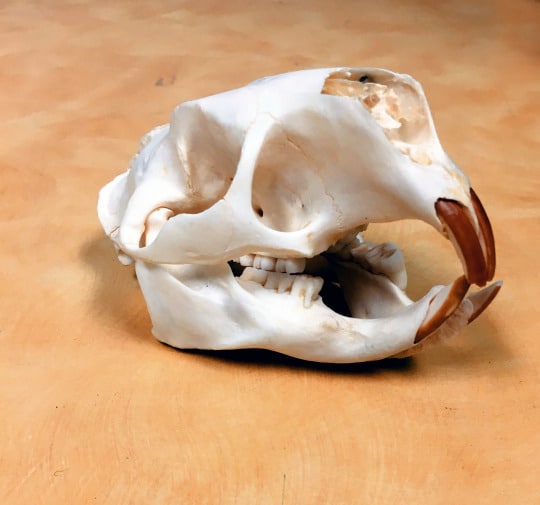
The term “teachable moment” doesn’t accurately capture the opportunity first grade teachers have to guide their students in making observations about dental structure and function. “First graders are all about teeth,” explains Carolyn Mericle of the University of Pittsburgh’s Falk Laboratory School. The 29-year teaching veteran has long noted how the shared experience of tooth loss and replacement among these young students creates a high level of interest in all things dental that lasts for months, not moments.
Carolyn shared these observations during a recent phone conversation about how the mammal skulls she recently borrowed from the museum’s Educator Loan Collection would enhance student learning. Ideally, she explained, the students’ observations of the diversity of dental arrangements represented in the dozen skulls (a set which included black bear, white-tailed deer, striped skunk, and porcupine), would help them make connections to each creature’s diet. This experience would in turn lead to a better understanding of related classification terms such as, carnivore, herbivore, and omnivore.
Like every educator who is teaching through the COVID-19 pandemic, however, Carolyn is facing the necessity of modifying and adapting established plans. “Everything is hard this year.” she summarized, citing a school year that began with some of her students in her classroom and others at home, before a recent transformation to all remote instruction.
In the past, her students encountered the skulls firsthand by circulating among classroom tables where the objects were displayed. Each table included enough adjacent elbow room for students to make tooth-focused observational drawings. This week Carolyn plans to photograph the skulls and share the resulting images electronically to create a similar observational opportunity. “You have to re-think everything,” she adds, “because we’re working with a different set of tools.”
When the conversation concluded with a question about hope, Carolyn’s answer came without any hesitation. “The resilience of children gives me hope. They make the best of it. They’re powered by curiosity.”
Patrick McShea works in the Education and Visitor Experience department of Carnegie Museum of Natural History. Museum employees are encouraged to blog about their unique experiences and knowledge gained from working at the museum.
Related Content
Holiday Stowaway: Northern Saw-whet Owl
Ask a Scientist: What is one of the more unique mammals of western PA?
